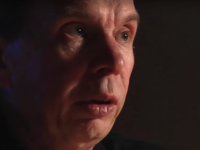Dave Brubeck, convention-defying jazz pianist and author of the standards “In Your Own Sweet Way” and “The Duke,” among others, has died — just one day shy of his 92nd birthday.
Along the way, Brubeck became an international jazz ambassador, remembered today as the second jazz artist — after only Louis Armstrong — to be featured on Time magazine’s cover.
Brubeck’s most important contributions came through a series of intriguing experiments with time signatures, notably on “Take Five” — actually penned by altoist and longtime musical confederate Paul Desmond — from Time Out, one of the best-selling jazz albums ever. Brubeck also recorded tunes like “Pick Up Sticks” in 6/4 time, used 7/4 on “Unsquare Dance,” 13/4 in “World’s Fair” and 9/8 in “Blue Rondo a la Turk” — the last of which also found a home on the legendary Time Out project.
[SOMETHING ELSE! REWIND: Dave Brubeck’s sons, Chris and Dan, have continued on in the family business, releasing a new album called ‘LifeTimes’ as the Brubeck Brothers Quartet.]
Later, Brubeck composed orchestral music, ballets, a musical, an oratorio, cantatas, and sacred music (including the mass To Hope! A Celebration), as well as television soundtracks — including the celebrated mini-series “This is America, Charlie Brown.” Still, as he once admitted on PBS: “I’ll tell you, the happiest I am is playing jazz. That’s the purest form of music.”
Born in Concord, California on December 6, 1920, Brubeck spent the bulk of youth on a 45,000-acre cattle ranch, and at one point aspired to that life. His father Pete Brubeck was a respected cattleman, and a championship rodeo roper. But his mother was a classical pianist, so she held just as much sway. “I think my mind,” Brubeck told Fred M. Hall in the 1997 biography It’s About Time: The Dave Brubeck Story, “was always on music, whether I was riding a horse, or what.”
Brubeck would attend the College of the Pacific (now called the University of the Pacific) at Stockton, California, with an initial plan to major in veterinary medicine. A year later, however, he had switched to music. While in school, he met Iola Marie Whitlock, director of the campus radio station. They married, and remained so until Brubeck’s death today.
After graduating in 1942, Brubeck was drafted and served in Europe beginning in 1944. Upon returning, he enrolled at California’s Mills College under French master Darius Milhaud through the GI Bill, and resumed his music studies. Next came the Brubeck Quartet, which began playing in nightclubs around San Francisco, and then the 1954 release Jazz Goes to College, which earned Brubeck his spot on the cover of Time. He formed an early trio with Cal Tjader, before running into Desmond, an Army buddy.
Together then as the Dave Brubeck Quartet, they’d rewrite the history of music. Time Out would go on become the first-ever jazz album to reach gold-selling status.
Brubeck reportedly died of heart failure while on the way to a regular appointment with his cardiologist. He is survived by Iola, as well as four sons and a daughter.
[amazon_enhanced asin=”B001S6Y0AQ” container=”” container_class=”” price=”All” background_color=”FFFFFF” link_color=”000000″ text_color=”0000FF” /] [amazon_enhanced asin=”B003O5MO3E” container=”” container_class=”” price=”All” background_color=”FFFFFF” link_color=”000000″ text_color=”0000FF” /] [amazon_enhanced asin=”B0077PPQGO” container=”” container_class=”” price=”All” background_color=”FFFFFF” link_color=”000000″ text_color=”0000FF” /] [amazon_enhanced asin=”B00005AWMW” container=”” container_class=”” price=”All” background_color=”FFFFFF” link_color=”000000″ text_color=”0000FF” /] [amazon_enhanced asin=”B003924NZ4″ container=”” container_class=”” price=”All” background_color=”FFFFFF” link_color=”000000″ text_color=”0000FF” /]
Here’s a look back at our recent thoughts on Dave Brubeck. Click through the title for more …
DAVE BRUBECK QUARTET, FEATURING PAUL DESMOND – ON THE RADIO: LIVE 1956-57 (2008): Masterpieces seem to come at us all at once, like epiphanies and summer storms. But the making of such things is more a journey than a lightning bolt, with ideas and elements to mix and match along the way. That’s the case with Dave Brubeck’s superlative 1959 effort “Time Out,” a load-bearing wall in the West Coast style of jazz. The way was paved through dozens of nights like the ones lovingly captured during Acrobat Music’s new On the Radio: Live 1956-57. The late Desmond, by the way, is a wonder throughout. Formalistic and blocky, sometimes maddeningly buttoned-down, Brubeck never sounds better than he does with the transformatively smooth saxist — who reportedly returned the compliment for years by including a line in his contract stipulating that Desmond would not make a record featuring any other pianist.
FORGOTTEN SERIES: DAVE BRUBECK – TRIO BRUBECK (1993): Though not the first time that Dad Dave had collaborated with the kids, this album had the randy feel of a whole new direction for the legendary pianist. Following the 1970s recording “Two Generations of Brubeck,” and the more recent “Quiet as the Moon” with son Darius (also on MusicMasters), Brubeck sat down with other sons Chris and Dan for his first trio work in some time. It’s terrific, even if the sound was rounder than you might have expected — primarily because Chris Brubeck played electric bass and, occasionally, bass trombone. That gave the record a bright bottom end. Inspired and named after a South African jazz group that Darius Brubeck brought to the U.S. in the late 1980s, “Jazzians” was actually the most surprising cut of all — forceful and hard-grooving in a way not expected from Brubeck. (Dad, that is.) Dave has rarely been in finer form than on this one, employing a brilliant two-hand polyrhythm. Dave’s original “Autumn” from Trio Brubeck was Grammy-nominated, too.
DAVE BRUBECK – JAZZ: RED, HOT AND COOL (1954): Time Out notwithstanding, the Dave Brubeck Quartet always seemed to play the hottest/coolest in live settings … thus the title is appropo. Move than five years before that masterpiece, the quartet was already experimenting a bit with time in the opener “Lover”. But throughout, it’s a great relaxed set with the band already working well together, and includes Paul Desmond’s unmistakable buttery tone. I almost chose Live At Carnegie Hall over this one, but Red, Hot & Cool is the sentimental favorite because my dad owned two scratchy vinyl copies of it and Columbia chose not to reprint it in CD format until very recently. But if you come across Carnegie, by all means, get it, too.




